Veteran Testimonial:
“As a Veteran of Special Operations and countless combat deployments I experienced a significant amount of what I call “occupational damage”. One of those is Traumatic Brain Injury (TBI) that negatively affects my balance. I rely on the ZeSa Activator Training Platforms as a critical component to my physical training strategies so that I can maintain a fit, healthy and productive life post my 28-year US Army career. Thank you, Cindy and Team for what you do and how you do it!”
Rob Lively, US Army Command Sergeant Major (Retired), TRX Elite Former President
Injuries in the Military: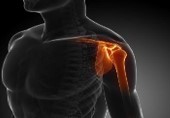
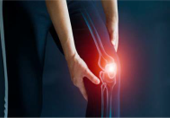
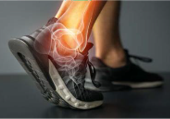
-
Basic training required by the military involves intense physical activities over varying durations that can result in especially high rates of musculoskeletal (MSK) injuries.[i]
-
For Special Operations Forces, physical training is the most common activity causing injury, accounting for up to 80% of injuries.[ii]
-
Almost 78% of male Army personnel and 85% of females discharged due to a disability are MSK in nature.[iii]
-
Female trainees have a two times greater injury rate than men due to several physical factors.[iv]
-
Physical training is a leading cause of common overuse tendon and ligament injuries.[v]
-
MSK injuries also lead to muscle atrophy, as injuries can render individuals unable to perform traditional fitness or athletic training resulting in disuse muscle atrophy.[vi]
-
During deployment, MSK injuries pose the most substantial type of injury in large part due to excessive load carriage and non-battle activities such as sports and physical training.[vii]
-
The impact of these injuries does not stop when the service member transitions out of the military. MSK injuries have a lasting effect on active and inactive service members, veterans and civilians. [viii]
-
The military does not have a comprehensive training system and program for safe and effective mitigation and prevention of MSK injuries for active and inactive duty soldiers and personnel. The same can be said for all veterans, intelligence, law enforcement, firefighters, athletes, and civilians.
The ZeSa® Solution: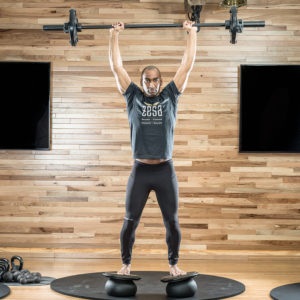
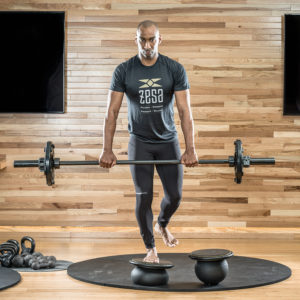
-
ZeSa’s Dynamic Balance-Strength Training System™ is the only compact portable system produced that challenges and trains MSK stability in all three planes of motion with progressively difficult levels to continually enhance performance.[ix]
-
ZeSa’s system trains the neuromuscular system to stabilize and strengthen the entire MSK system, including muscles, ligaments, and tendons surrounding joints most prone to overuse and injury (ankles, knees, hips, and shoulders).[x]
-
ZeSa’s system mitigates joint instability while simultaneously training major skeletal muscles and the associated stabilizing muscles.[xi]
-
ZeSa’s system challenges and trains proprioception (the body’s ability to sense movement, action, and body position) for injury prevention, by providing simulated actions that mimic the same kind of action that military members routinely encounter both in basic training and active duty.[xii]
-
ZeSa’s higher level devices bring the challenges needed to improve injury prevention and performance for highly trained individuals such as special ops forces, athletes, and trainers.[xiii]
-
Additionally, ZeSa’s progressive system provides low to no impact training methods which reduce the incidence of training-induced injuries and is suitable for all athletic levels.[xiv]
[i] Hauret KG, Jones BH, Bullock SH, Canham-Chervak M, Canada S. Musculoskeletal injuries description of an under-recognized injury problem among military personnel. Am J Prev Med. 2010 Jan;38(1 Suppl):S61-70. doi: 10.1016/j.amepre.2009.10.021. PMID: 20117601.
[ii] Abt JP, Sell TC, Lovalekar MT, Keenan KA, Bozich AJ, Morgan JS, Kane SF, Benson PJ, Lephart SM. Injury epidemiology of U.S. Army Special Operations forces. Mil Med. 2014 Oct;179(10):1106-12. doi: 10.7205/MILMED-D-14-00078. PMID: 25269128.
[iii] Joseph M Molloy, Timothy L Pendergrass, Ian E Lee, Michelle C Chervak, Keith G Hauret, Daniel I Rhon, Musculoskeletal Injuries and United States Army Readiness Part I: Overview of Injuries and their Strategic Impact, Military Medicine, Volume 185, Issue 9-10, September-October 2020, Pages e1461–e1471, https://doi.org/10.1093/milmed/usaa027
[iv] Bradley C. Nindl, Bruce H. Jones, Stephanie J. Van Arsdale, Karen Kelly, William J. Kraemer, Operational Physical Performance and Fitness in Military Women: Physiological, Musculoskeletal Injury, and Optimized Physical Training Considerations for Successfully Integrating Women Into Combat-Centric Military Occupations, Military Medicine, Volume 181, Issue suppl_1, January 2016, Pages 50–62, https://doi.org/10.7205/MILMED-D-15-00382
[v] Musculoskeletal injuries in military personnel—Descriptive epidemiology, risk factor identification, and prevention Lovalekar, Mita et al. Journal of Science and Medicine in Sport, Volume 24, Issue 10, 963 – 969
[vi] Howard EE, Pasiakos SM, Fussell MA, Rodriguez NR. Skeletal Muscle Disuse Atrophy and the Rehabilitative Role of Protein in Recovery from Musculoskeletal Injury. Adv Nutr. 2020 Jul 1;11(4):989-1001. doi: 10.1093/advances/nmaa015. PMID: 32167129; PMCID: PMC7360452.
[vii] Andersen KA, Grimshaw PN, Kelso RM, Bentley DJ. Musculoskeletal Lower Limb Injury Risk in Army Populations. Sports Med Open. 2016;2:22. doi: 10.1186/s40798-016-0046-z. Epub 2016 Apr 29. PMID: 27213134; PMCID: PMC4851683.
[viii] MSK injuries have a lasting effect on active and inactive service members, veterans and civilians.
[ix] Wahl, Michael J; Behm, David G. Not All Instability Training Devices Enhance Muscle Activation in Highly Resistance-Trained Individuals. Journal of Strength and Conditioning Research 22(4):p 1360-1370, July 2008. | DOI: 10.1519/JSC.0b013e318175ca3c
[x] Qin Z, Qin Y, Wang J. Neuromuscular Training Effects on Athletes’ Jumping and Lower Limb Injury: A Systematic Review. J Mot Behav. 2024;56(5):600-613. doi: 10.1080/00222895.2024.2369699. Epub 2024 Jul 5. PMID: 38967242.
[xi] Akbari A, Ghiasi F, Mir M, Hosseinifar M. The Effects of Balance Training on Static and Dynamic Postural Stability Indices After Acute ACL Reconstruction. Glob J Health Sci. 2015 Jul 31;8(4):68-81. doi: 10.5539/gjhs.v8n4p68. PMID: 26573034; PMCID: PMC4873586.
[xii] Winter L, Huang Q, Sertic JVL, Konczak J. The Effectiveness of Proprioceptive Training for Improving Motor Performance and Motor Dysfunction: A Systematic Review. Front Rehabil Sci. 2022 Apr 8;3:830166. doi: 10.3389/fresc.2022.830166. PMID: 36188962; PMCID: PMC9397687.
[xiii] Wahl, Michael J; Behm, David G. Not All Instability Training Devices Enhance Muscle Activation in Highly Resistance-Trained Individuals. Journal of Strength and Conditioning Research 22(4):p 1360-1370, July 2008. | DOI: 10.1519/JSC.0b013e318175ca3c
[xiv] Rynecki ND, Siracuse BL, Ippolito JA, Beebe KS. Injuries sustained during high intensity interval training: are modern fitness trends contributing to increased injury rates? J Sports Med Phys Fitness. 2019 Jul;59(7):1206-1212. doi: 10.23736/S0022-4707.19.09407-6. Epub 2019 Feb 12. PMID: 30758171.
